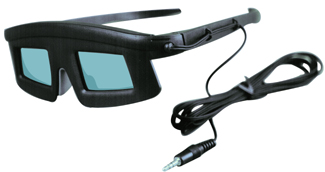

The unofficial
SSC 3Dplus & i-Art Eye3D-Force
pageby Christoph Bungert
page initialy released on April 26, 2001
last update on...quick info
related websites
packages
pro & con
detailed pictures
Soft4D 3Dplus video software
Quick info: The SSC 3Dplus and the i-Art Eye3D-Force are wired 3D-shutterglasses systems. The hardware of both systems seems to be 100% identical. The difference between the two products lies in the software packages - at least currently.
SSC 3Dplus comes with a realtime 2D-to-3D conversion video player for VideoCD's and other MPEG1 sources by Soft4D.
It's not a secret that I'm sceptical about 2D-to-3D transfer in general. More on that later.
The i-Art Eye3D-Force package comes with a Showcase CD containing tools, demos and a Studio-Max plug-in.Both glasses come with the Wicked3D eyeSCREAM2000 game driver for Win9x. Since they support page-flipping, interlace and sync-doubling, therefore they are also compatible with ASUS, ELSA and VRCaddyMe game drivers.
The controller and glasses are excellent. If there only was a line-blanker device to add addtional compatibility it would make a perfect wired system.
related websites: SSC
Soft4D
i-Art (with support forum)
Wicked3D game driver
Eye3D PCI review
Eye3D 4-in-1 review
A-Win Magic 3D (pretty similar product)
Demensional (Eye3D dealer USA)
MMS Computer (german i-Art retailer)WINx3D - universal glasses driver
ELSA Revelator game driver
ASUS game driver
VRCaddy game driverH3D-Activator download
Best Buy page/ Shutterglasses Top10
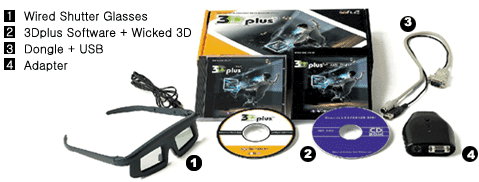
The SSC 3Dplus packaging
(the headband is missing in this image, but it's in the box)
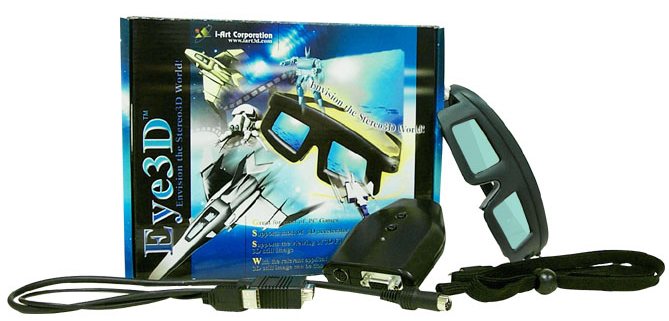
The i-Art Eye3D-Force packaging
(software and manual are missing in this image, but they're part of the package)
Advantage and Disadvantages
SSC 3Dplus / i-Art Eye3D-Force Pro Con glasses + light and comfortable
+ large panels
+ good optic quality
+ fits over any prescribed glasses
+ optional headbandcontroller
+ autosync for page-flipping and interlace
+ sync-doubler for split-screen 3D-format
+ draws power from USB-port (no USB-driver required)
+ no batteries, power adaptor or VGA-power required
+ supports non-Windows operating systems (for native 3D-software)
+ compatible to Wicked3D, Revelator, ASUS and to VRCaddyMe drivers
+ full manual control (buttons for stereo-mode and stereo-reverse)
+ automatic control possible (supports H3D/eyeSCREAM and i-Art/SSC color codes)
+ 2 standard 3.5 mm stereo connectors
+ accurate synchronization
+ supports high resolutions and refresh rates
+ VGA-pass-through has only low impact on signal qualityadvantages over predecessor Eye3D-PCI:
+ no waste of a PCI-slot
+ easier to install
+ full manual control by buttons
+ control-LED3Dplus software package:
+ Wicked3D eyeSCREAM universal game driver
+ 3Dplus by Soft4D - 2D to 3D VideoCD/MPEG1 playerEye3D-Force software package:
+ Wicked3D eyeSCREAM universal game driver
+ 3D Showcase CD with demos and utilsglasses - without the headband glasses may tend to slip down the nose a bit
controller
- no line-blanking
- shuts down on every gfx-mode change and has to be reinitialized by button or color code
- doesn't work without USB port
- no VESA-DIN-3 connectors
- no IR-emitter for wireless glasses
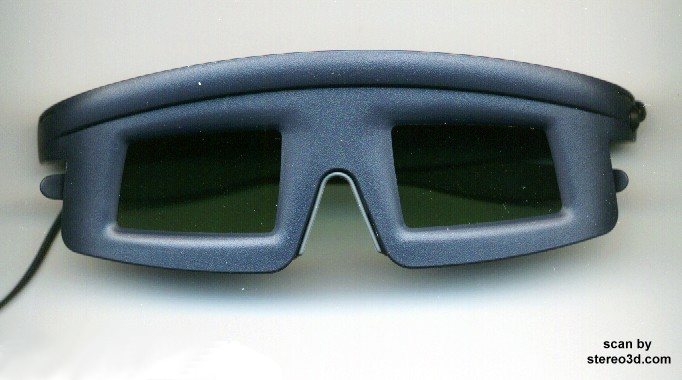
Some of the most comfortable glasses on the market. They fit perfectly over prescribed glasses.
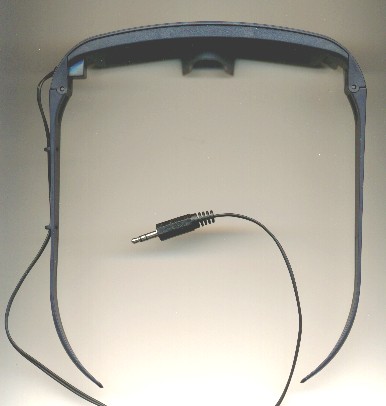
Wire with 3.5 mm stereo jack
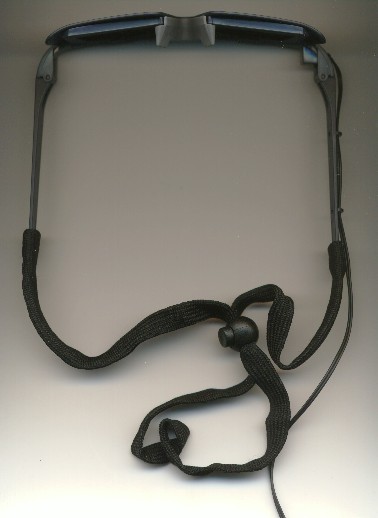
Adjustable headband
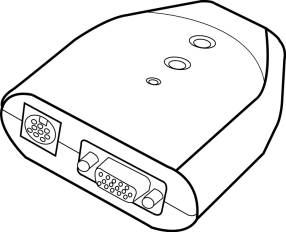
Controller: page-flipping, interlace and sync-doubler functionality;
buttons for stereo-mode and stereo-reverse, control-LED,
2 standard 3.5 mm connectors
(picture by i-Art)
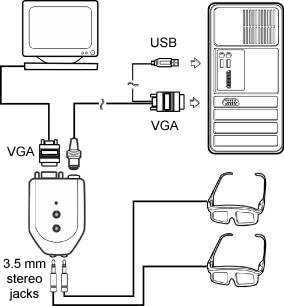
Connection scheme
(picture by i-Art)
3Dplus by Soft4D
realtime 2D-to-3D mpeg1 video conversion for shutterglasses
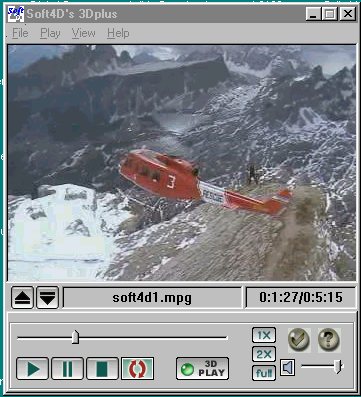
3dplus video converter
system requirementsWindows 98, ME, 2000
Pentium 3 with 550 MHz
128 MB RAM
VGA-board with Direct Draw support3Dplus uses an over-under, split-screen format in full-screen mode (800x600@16bit Direct Draw) and requires shutterglasses with sync-doubling controller.
A DVD/MPEG2 version of 3Dplus is announced for later this year (2001), but will require tremendous CPU-horsepower. Look what they need for MPEG1 already.
Brand and product names are trademarks or registered trademarks of their respective holders.
The text is the intellectual property of the author.
Don't copy any part without credit and link to this site!